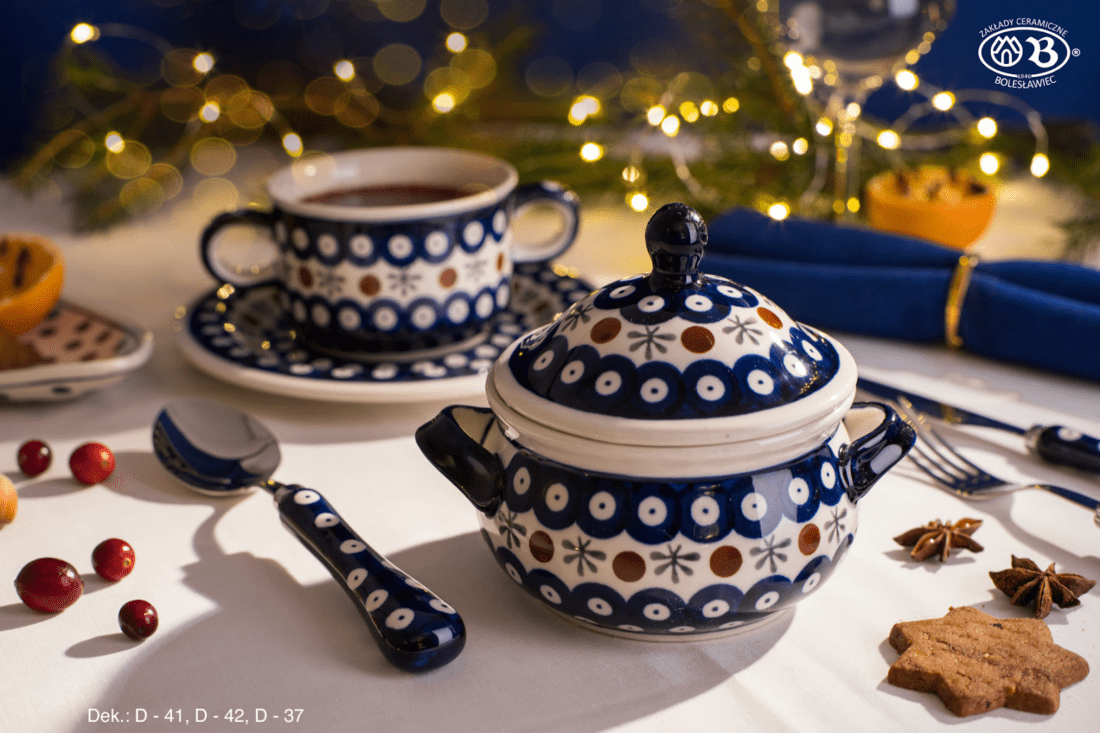Polish pottery is an art form steeped in tradition, history, and meticulous craftsmanship. Each piece tells a story, bearing the mark of skilled artisans who have mastered the craft over generations.

If you’re an avid collector or a beginner drawn to its vibrant patterns, understanding Polish handmade pottery will elevate your appreciation for this exquisite artistry.
Let’s explore its origins, unique characteristics, and essential tips for collecting and displaying these cherished works of art.
The Origins of Polish Pottery
Polish pottery, also known as Bolesławiec pottery, originates from the small town of Bolesławiec in southwestern Poland. The region’s abundant clay deposits have made it a hub for ceramics since the Middle Ages. By the 18th century, local artisans had refined their techniques, incorporating intricate hand-painted patterns and signature blue-and-white designs.
What sets Polish pottery apart is the centuries-old method of hand-stamping. Artists use sponge stamps and fine brushes to create floral, geometric, and folk-inspired motifs. These designs, combined with high-fired stoneware, result in exceptionally durable and visually striking pieces. Today, Bolesławiec remains the heart of Polish pottery production, with artisans preserving traditional methods while adapting to contemporary aesthetics.
The Craftsmanship Behind Each Piece
Authentic Polish pottery is entirely handcrafted, making each piece unique. The process begins with high-quality clay that is shaped, dried, and bisque-fired at over 1,800°F. Skilled artisans then apply intricate designs using natural pigments, ensuring rich, fade-resistant colors. A final glaze is added before the second firing, which reaches temperatures exceeding 2,200°F, creating a non-porous, chip-resistant finish.
One of the most distinctive aspects of Polish pottery is the Unikat (“unique”) line. These pieces, signed by master artisans, feature highly detailed, intricate patterns that require advanced skill and time to produce. While standard patterns follow traditional designs, Unikat pottery allows artists to experiment with new color palettes and motifs, making them highly sought-after by collectors.
How to Identify Authentic Polish Pottery
With the popularity of Polish pottery growing worldwide, distinguishing authentic pieces from mass-produced imitations is essential. Genuine Bolesławiec pottery bears specific hallmarks:
- a stamp or signature on the bottom, indicating the manufacturer and artist
- a hand-painted or hand-stamped design, rather than printed patterns
- a rich, deep glaze that enhances durability and luster
- a smooth, dense stoneware body with a substantial feel
Additionally, collectors should purchase from reputable sources, such as certified Polish pottery retailers or directly from manufacturers in Bolesławiec.
Building a Polish Pottery Collection
Curating a collection of Polish pottery is both an art and a personal journey. Some collectors focus on specific patterns or color schemes, while others seek rare or limited-edition pieces. When starting a collection, consider the following:
- Functionality: Polish pottery is oven, microwave, and dishwasher safe, making it both beautiful and practical for daily use.
- Aesthetic appeal: Choose patterns that complement your home decor, whether vibrant floral motifs or subtle, classic designs.
- Investment value: Unikat pieces and discontinued patterns often appreciate in value, making them excellent investments.
Proper storage and care also play a role in maintaining your collection. While Polish pottery is highly durable, stacking pieces carefully and avoiding sudden temperature changes will help preserve their integrity.
Displaying Polish Pottery in Your Home
Polish pottery seamlessly blends artistry with functionality, making it a striking addition to any home. Displaying your collection effectively enhances its beauty and showcases your appreciation for craftsmanship. Consider these styling tips:
- Open shelving: Arrange pieces on open shelves in your kitchen or dining room to create a visually appealing focal point.
- Mix and match: Combine different patterns for an eclectic yet harmonious look that highlights the uniqueness of each piece.
- Table settings: Incorporate Polish pottery into everyday dining to enjoy its beauty in a practical setting.
- Wall displays: Mount plates on walls to transform them into decorative art pieces.
Regardless of your approach, displaying Polish pottery thoughtfully allows its vibrant designs to shine while adding warmth and character to your space.
Conclusion
Polish pottery is a testament to the enduring appeal of traditional craftsmanship and artistic expression. From its origins in Bolesławiec to its role in contemporary home decor, each piece embodies skill, history, and cultural heritage.
Whether you are drawn to its intricate patterns, durability, or investment potential, collecting Polish pottery offers a rewarding experience that bridges functionality and fine art. Understanding its craftsmanship and curating a thoughtful collection can bring a touch of European elegance into your home, celebrating the artistry of handmade ceramics for years to come.



